
I recently came across this CNN report of four individuals who discuss their experiences of wearing religious garments in the US. Two of the individuals are Sikh men (where are the Sikh women at) along with a Muslim woman and a Jewish man.
Ajitpal Singh Rania: Ajitpal lives in the Washington area and immigrated to the United States pre-9/11 into a college town. Aside from curious looks, he feels that he has not really been discriminated against as a Sikh wearing a turban because he arrived in a college town that was more open to diversity. Ajitpal also believes that educational workshops have helped many American learn more about Sikhs. Watch his video report here.
Syeda Martha Graham: Syeda of Kansas City, Missouri, converted to Islam and made a personal decision to not only wear a head scarf but also a face cover. Not wearing her head scarf makes her feel vulnerable, similar to how others feel about not wearing a top. She remembers an incident where a bank employee asked her to take her “mask” off; but another employee came to her defense. Syeda feels more people are nice than offensive. She also wishes people would assume less and ask more questions. Watch her video clip here.
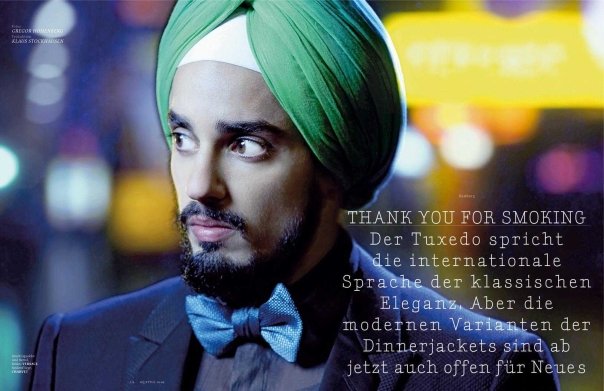
 Remember that one particular Kenneth Cole ad in NYC that caught our eye? Yes, the picture of the sardar who received much admiration from Sikhs and non-Sikhs around the globe. Well, as it turns out – he’s back. Sonny Caberwal is being featured in GQ’s upcoming Spring/Summer 2009 (German?) publication. Unfortuantely, there isn’t much press around it yet – but what we do have are some pictures from the shoot in Germany.
Remember that one particular Kenneth Cole ad in NYC that caught our eye? Yes, the picture of the sardar who received much admiration from Sikhs and non-Sikhs around the globe. Well, as it turns out – he’s back. Sonny Caberwal is being featured in GQ’s upcoming Spring/Summer 2009 (German?) publication. Unfortuantely, there isn’t much press around it yet – but what we do have are some pictures from the shoot in Germany.

–
As with the Kenneth Cole ad – it’s great that the image of the sardar is receiving positive attention. Perhaps it will encourage those who aren’t familiar with Sikhs to learn more. I said perhaps. More realistically, the page will be turned (no, not all Sikh men dress that well like that) and Sikhs will still be unknown. It’s in our human nature to see something unfamiliar, and then go back to our dinner and never think of it again (take Darfur for example). And while it’s great that Sonny is getting these wonderful opportunities (Sikh PR right?) – we should definitely save room for other Sikh male fashionistas… like this one from one of my fav sites The Satorialist! After the jump…
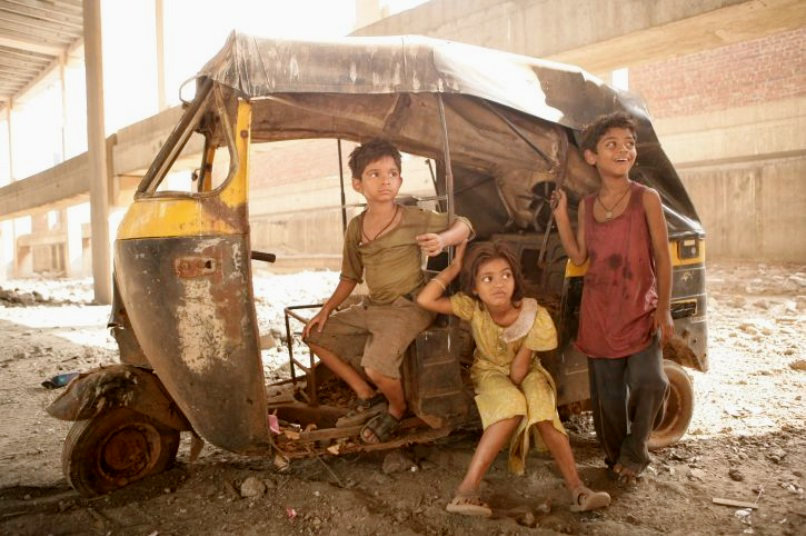 Amidst all the “Slumdog Millionaire” Oscar hysteria, some have been asking how are we ACTUALLY going to combat the issues of poverty in Indian slums? I heard on “Entertainment Tonight”, or some show like that, the movie’s directors/producers have set up a trust-fund for the child-stars (who currently live in slums), are paying for their families to move into decent apartments, and will be paying for the children’s education.
Amidst all the “Slumdog Millionaire” Oscar hysteria, some have been asking how are we ACTUALLY going to combat the issues of poverty in Indian slums? I heard on “Entertainment Tonight”, or some show like that, the movie’s directors/producers have set up a trust-fund for the child-stars (who currently live in slums), are paying for their families to move into decent apartments, and will be paying for the children’s education.
But how about the rest of the families who were cheering away in Mumbai slums as “Slumdog Millionaire” won its eight Oscars? I came across this great blog post by Minal Hajratwala, “Slumdog”: Don’t Just Watch, Do Something, which took scenes from the movie and talked about how we can address those poverty issues in reality. I am going to copy a few of those segments here, but please do visit Minal’s blog for the full-effect.
 While many may still be reveling in Slumdog’s Sunday limelight, a darker movie about Indo-Canadians in Vancouver (the vast majority of who are Punjabi-Sikh), aiming to shed light on gang violence, is sparking criticism. [See trailer here.]
While many may still be reveling in Slumdog’s Sunday limelight, a darker movie about Indo-Canadians in Vancouver (the vast majority of who are Punjabi-Sikh), aiming to shed light on gang violence, is sparking criticism. [See trailer here.]
The film titled “A Warrior’s Religion” was made by Mani Amar, who describes it as a poetic documentary. When asked about what drove him to make the film, he said:
“It had to be done. How many more people need to die? We are past the 130 mark of deaths in our community. The issue is not slowing down … How readily we have accepted gang violence and how engrossed we are in it is what propelled me to do it. We are so relaxed about an issue that we should not be relaxed about at all.” [link]
In the film, Mani interviews Bal Buttar, a high-profile former gang member who is now blind and a quadriplegic after being shot in a gang related incident.
Mani said: “When I met Buttar, I laid it out on the table directly to him and said to Buttar, “I don’t respect you. You have an opportunity in your life to show youth that this is what gang violence will bring you.” For whatever reason, Buttar accepted the challenge. In the end though, I reaffirmed that it’s only death or jail to get out.” For Mani, what resonated most from the interviews was Buttar’s way of explaining karma: “You take blood. That blood gets taken from you.” [link]
Controversy has arisen from the film’s name, “A Warrior’s Religion,” and its use of visual references to Sikhism through images of gurdwaras, scenes from a Vaisaikhi parade, martyrs, and an image of a khanda in flames with bullet holes in the background. Mani explains how he chose the name:
The Center for Asian American Media (CAAM) is a group working to present stories that convey the “richness and diversity of Asian American experiences” to the broadcast audience. They do this by funding, producing, distributing and exhibiting works in film, television and digital media. One example is this video directed for Mandeep Sethi, a bay area MC. As he says, Where do we go from here, I thought my people would be proud of their heritage and instead they want to bury it.
Also presented by the Center, is the upcoming 27th Asian American Film Festival in San Francisco. For those of you in the area, here are some of the films you might want to catch.
 Michael Singh, a filmmaker, has been attempting for years to finish a documentary on his experiences during 1984. However, without support from the Sikh community (yes, money) he has found himself unable to complete this work. His goal has been to make a one-hour documentary based on materials he recorded and filmed during three days in Delhi when mobs were roaming outside the compound where he and his brother Surinder were staying.
Michael Singh, a filmmaker, has been attempting for years to finish a documentary on his experiences during 1984. However, without support from the Sikh community (yes, money) he has found himself unable to complete this work. His goal has been to make a one-hour documentary based on materials he recorded and filmed during three days in Delhi when mobs were roaming outside the compound where he and his brother Surinder were staying.
The documentary-film-in-progress Riding the Tiger will recount filmmaker Michael Singh’s personal and intimate journey into self-identity as a half-Sikh young man who survived the atrocities of 1984, denying his Sikh heritage and passing for a white man. His story is set against the backdrop of the bloodiest year in modern Sikh history, a year of which many young Sikhs know little. [link]
The filmmaker is concerned that the traumatic events of 1984 are “quickly fading” from the Sikh consciousness and is asking the community, “How serious are you about preserving Sikh culture?” Micheal’s story begins when he and his brother return home, to India. After Prime Minister Indira Gandhi lay siege on the Sikh’s holiest site, Michael and his brother Surinder managed to infiltrate it and view the destruction following the gunning down of hundreds of pilgrims. Upon returning to the US Micheal publicized his story, and to his delight, three Sikh film producers showed up at his apartment, expressing their desire to hear his interviews and bankroll his film. Michael tells us of the tragedy of this visit,
Presidents’ Day in the U.S. is kind of a all-in-one holiday, you celebrate Lincoln and Washington’s birthdays while honoring all U.S. Presidents. Some just enjoy the day off too!
On this Presidents’ Day, C-SPAN commemorated the holiday by releasing the results of its 2009 Historians Presidential Leadership Survey (last time they did it was in 2000). Sixty-five historians chosen by C-SPAN and its academic advisors, ranked the last 42 American Presidents across 10 attributes of presidential leadership. These attributes ranged from “International Relations” and “Economic Management” to “Moral Authority” and “Public Persuasion”. There was also a category for “Performance Within Contexts Of Times” to account for the variation in issues encountered by each President.
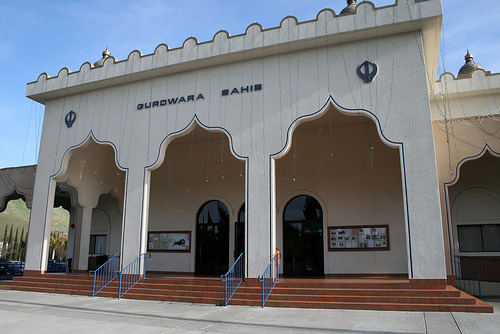 The city of Fremont in the Bay Area probably doesn’t need much introduction for most California Sikhs. A turn onto Gurdwara Road takes one into the residential area that houses the famous Fremont Gurdwara. A site of community energy, it has also been sporadically the site of community violence. Still the story of the Sikhs in Fremont is just one of Fremont’s stories.
The city of Fremont in the Bay Area probably doesn’t need much introduction for most California Sikhs. A turn onto Gurdwara Road takes one into the residential area that houses the famous Fremont Gurdwara. A site of community energy, it has also been sporadically the site of community violence. Still the story of the Sikhs in Fremont is just one of Fremont’s stories.
From a sleepy white city of 23,000, Fremont has become the Bay Area’s fourth largest city with a population of over 200,000 and an Asian-majority. The city is home to the largest Afghan population in the US. The city has a prominent role in Khaled Hosseini’s Kite Runner movie and novel, as many Afghans came to this city following the violence in their homeland during the Soviet invasion in 1979. My own experience with the Afghans living there was limited to the Afghan-Punjabi youth violence during the early/mid 1990s.
The press, unsurprisingly, has paid significant attention to Barack Obama’s inauguration. The importance of Obama’s ascendancy to the presidency — in terms of its symbolic and historic significance as well as the substantive policy changes that will follow — cannot be overlooked. Interestingly, the Sikh aspect of Obama-mania also has reached the pages of prominent press outlets. Those reports contain some good news, and even some bad. First, the good….
 Obama gained points when he took the time to provide answers to a questionnaire about Sikh interests and concerns. Indeed, a Harvard professor on religion and the religious diaspora in America, noted: “The Sikhs heard from you too. Your response to the questions… made it clear that you know your Sikh constituents and have a real concern for the issues of discrimination, hate crimes, and profiling they have faced. Your thoughtful response to the Sikhs stood in stark contrast to that of your opponent: ‘No Response.'”
Obama gained points when he took the time to provide answers to a questionnaire about Sikh interests and concerns. Indeed, a Harvard professor on religion and the religious diaspora in America, noted: “The Sikhs heard from you too. Your response to the questions… made it clear that you know your Sikh constituents and have a real concern for the issues of discrimination, hate crimes, and profiling they have faced. Your thoughtful response to the Sikhs stood in stark contrast to that of your opponent: ‘No Response.'”
Also, the Sikh Inaugural Ball — however viewed by some Sikhs themselves (see here and here for our previous coverage) — generally has been favorably seen by non-Sikhs. The Washington Post, for example, profiled a Sikh woman’s journey from California to Washington, DC, to attend the ball. The overarching theme of the piece was how Obama’s election has reinvigorated the Sikh woman’s conception of politics and her place in America. “Now,” she said, “I feel I can call this country my home.” [Aunty Ji, Gulshan Gachoke, is pictured at right.]
The Wall Street Journal, another respected publication, reported from the ball itself. In addition to discussing the details of the ball, the Journal offered this observation: “Several people at the event drew a comparison between Barack Obama and Manmohan Singh, the first Sikh prime minister of India, a country where only 2% of the people identify as Sikh.” (I haven’t drawn this connection in my own mind, but a healthy debate may be had about whether a meaningful link between the two may be made on the basis of their minority status and respective places in the American and Indian governments.)
And now the “bad”….
Here is a report by “Voice Of America” that takes a look at the Sikh Inaugural Ball (Publius covered it earlier here) as part of the Indian-American take on the Obama inauguration story. An interesting perspective following the recent discussion on the TLH post: Sikh or Indian?.

Thoughts?
 Prince Harry has been roundly criticized for using the term “Paki” in refering to another miliary cadet and for suggesting that another cadet looked like a “raghead.” To his credit, he has apologized.
Prince Harry has been roundly criticized for using the term “Paki” in refering to another miliary cadet and for suggesting that another cadet looked like a “raghead.” To his credit, he has apologized.
What’s been interesting to me about this subject, first, is the discussion of whether Prince Harry deserves a pass. In a BBC article, Sunny Hundal, a Sikh, rightfully recognizes that the Prince’s casual use of “raghead” is troublesome. But, Hundal dismisses the attention paid to Prince Harry’s blunder as simple youthful indiscretion: “He’s a young person messing around and all the rest of it. Young kids say stupid things,” he said in the same BBC piece.
Sure Prince Harry is relatively young, but he is a public figure; more specifically, he is royalty who has had a fine education and upbringing, who has been on notice for years and years that what he does and says will be scrutinized and examined by the people. He should especially know this after his costume gaffe, in which he wore a Nazi uniform to a party. The mistakes of youth may explain some things, but Prince Harry is no ordinary person; nor is he so young that we can discount everything he says or does.
The other aspect of this story that piqued my interest is the apology offered by Prince Harry with respect to the “raghead” comment. On this point, a royal spokesman said, “Prince Harry used the term ‘raghead’ to mean Taliban or Iraqi insurgent.”
This apology totally misses the boat — the concern is not whether Prince Harry “meant” to apply the term to a certain group (even if the group is terrorists or horrible elements of our society); rather the concern is that the term itself is inherently inappropriate because it is used to brand and insult anyone that wears a headdress, including an Arab or a Sikh. In other words, using “raghead” does not suddenly become okay if it is correctly targeted. When it comes to this particular word, context does not matter — it is only used in a derogatory fashion, unlike other charged terms, like the “n-word”.
I hope Prince Harry learns his lesson and removes “raghead” from his vocabulary. I also hope he — or his staff — won’t come up with such lame explanations when and if he commits the next faux pas.
In Sri Lanka last week, a brave voice was silenced. The editor of the Sunday L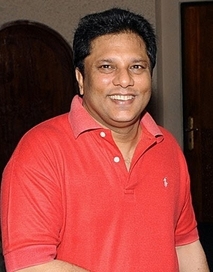 eader, Lasantha Wickramatunga, was killed by gunmen on two motorcycles on his way to work. With prescience, he had predicted his impending death, believing that he would be killed by the government. He wrote an incredibly moving essay, with instructions that it be published upon his death.
eader, Lasantha Wickramatunga, was killed by gunmen on two motorcycles on his way to work. With prescience, he had predicted his impending death, believing that he would be killed by the government. He wrote an incredibly moving essay, with instructions that it be published upon his death.
A brief summary of the context, the war which Wickramatunga covered and was silenced by, can be found here.
Wickramatunga’s essay is deeply moving. You can find it in full here and here. Below is an excerpt:
No other profession calls on its practitioners to lay down their lives for their art save the armed forces and, in Sri Lanka, journalism. In the course of the past few years, the independent media have increasingly come under attack. Electronic and print-media institutions have been burnt, bombed, sealed and coerced. Countless journalists have been harassed, threatened and killed. It has been my honour to belong to all those categories and now especially the last.
I have been in the business of journalism a good long time. Indeed, 2009 will be The Sunday Leader’s 15th year. Many things have changed in Sri Lanka during that time, and it does not need me to tell you that the greater part of that change has been for the worse. We find ourselves in the midst of a civil war ruthlessly prosecuted by protagonists whose bloodlust knows no bounds. Terror, whether perpetrated by terrorists or the state, has become the order of the day. Indeed, murder has become the primary tool whereby the state seeks to control the organs of liberty. Today it is the journalists, tomorrow it will be the judges. For neither group have the risks ever been higher or the stakes lower.
Why then do we do it? I often wonder that. After all, I too am a husband, and the father of three wonderful children. I too have responsibilities and obligations that transcend my profession, be it the law or journalism. Is it worth the risk? Many people tell me it is not. Friends tell me to revert to the bar, and goodness knows it offers a better and safer livelihood. Others, including political leaders on both sides, have at various times sought to induce me to take to politics, going so far as to offer me ministries of my choice. Diplomats, recognising the risk journalists face in Sri Lanka, have offered me safe passage and the right of residence in their countries. Whatever else I may have been stuck for, I have not been stuck for choice.
But there is a calling that is yet above high office, fame, lucre and security. It is the call of conscience.
I. Introduction
My last post, which addressed the First Global Sikh Civil Rights Conference held by the non-profit group United Sikhs, generated significant discussion. In an attempt to re-focus and reinvigorate that discussion, I wish to first clarify what the post was not about — it was not intended to serve as an indictment of the United Sikhs’ work overall, to criticize specific projects or initiatives other than the conference, or to compare their efforts to that of other Sikh organizations with greater financial resources. Some of the comments did touch on these subjects, though this was not my intention.
My sole interest was and remains the manner in which the United Sikhs decided, on its own, to describe the conference and the report to the public, including necessarily the Sikh members of it. I wrote that it was “the United Sikhs’ characterizations of the conference and report” that I found problematic. Regrettably, the comments to my post — some made spiritedly by United Sikhs Director Mejindarpaul Kaur and others working for or affiliated with the United Sikhs — have done little to assuage my earlier concerns.
 To my surprise, I came across a news article with the headline, “Sikhs Agree on a Global Civil Rights Agenda.” When did we do that??
To my surprise, I came across a news article with the headline, “Sikhs Agree on a Global Civil Rights Agenda.” When did we do that??
It turns out that the United Sikhs — a non-profit organization that addresses various civil rights issues on behalf of Sikhs, especially and including the French ban on conspicuous articles of faith — issued a press release indicating that the group held the First Global Sikh Civil Rights Conference at which the First Global Sikh Civil Rights Report was presented and adopted.
At the outset, I should note that I respect the United Sikhs’ work, most notably its humanitarian efforts. I also appreciate its interest in developing a set of broad Sikh civil rights issues and recommendations on how to tackle those very issues. The Report itself contains a wealth of information on the Sikh experience in many different countries, most of which are often overlooked in discussions of the Sikh diaspora. The breadth of the report is impressive; a lot of effort seems to have been put into its publication.
That said, the United Sikhs’ characterizations of the conference and report are troublesome in at least several respects — its factually inaccurate, grossly misleading, and plainly self-serving.
Yes, a company called IndiaNIC has developed a Sukhmani Sahib iPhone application. For $0.99 you can download the entire Sukhmani Sahib and with a single swipe, read through it on your iPhone. Information about this application reads,
This iphone book has following features:
– Full Sukhmani Sahib in Hindi Language
– No need for internet connectivity to view content
– Each page changes with swipe and button options
– No need of Language Setting
– Elegant Layout & Cool Design
– Easy to carry everywhere you go
 No, you did not read incorrectly. This Sukhmani Sahib is in Hindi and not Gurmukhi as … perhaps would be expected? There are few different questions that come to mind when trying to assess why the company chose to publish this application in Hindi. Who is their target audience I wonder? Are there many non-Sikhs who read Sukhmani Sahib (that’s great if that is the case!)? We’ve had the debate before about whether Punjabi is a diminishing language – so I wonder how much of that plays a role in this initiative. (I know, I know, I seem to be full of many questions and few answers). With the growing popularity of mobile-based content, it is nice to find these Sikhi focused applications. Mr. Sikhnet recently discussed his efforts and the need to develop applications for mobile phones. I assume there will be challenges associated with transitioning texts such as Sukhmani Sahib, which are predominantly read by using gutkas to reading Gurbani on your iPhone while you’re waiting for the bus. Personally, I think that Gurbani should be accessible to all and whether it is read in a gutka or on your mobile phone screen should not be important. Those individuals who do not already have an interest in learning Gurbani will probably not download this application anyway. It is likely targeted at those who are wanting to learn and if it so happens to be on an iPhone, then I don’t necessarily think that’s a bad thing. Nevertheless, I am still wondering about the choice of Hindi….
No, you did not read incorrectly. This Sukhmani Sahib is in Hindi and not Gurmukhi as … perhaps would be expected? There are few different questions that come to mind when trying to assess why the company chose to publish this application in Hindi. Who is their target audience I wonder? Are there many non-Sikhs who read Sukhmani Sahib (that’s great if that is the case!)? We’ve had the debate before about whether Punjabi is a diminishing language – so I wonder how much of that plays a role in this initiative. (I know, I know, I seem to be full of many questions and few answers). With the growing popularity of mobile-based content, it is nice to find these Sikhi focused applications. Mr. Sikhnet recently discussed his efforts and the need to develop applications for mobile phones. I assume there will be challenges associated with transitioning texts such as Sukhmani Sahib, which are predominantly read by using gutkas to reading Gurbani on your iPhone while you’re waiting for the bus. Personally, I think that Gurbani should be accessible to all and whether it is read in a gutka or on your mobile phone screen should not be important. Those individuals who do not already have an interest in learning Gurbani will probably not download this application anyway. It is likely targeted at those who are wanting to learn and if it so happens to be on an iPhone, then I don’t necessarily think that’s a bad thing. Nevertheless, I am still wondering about the choice of Hindi….
In my last post, I argued that terrorists, by their actions, sever any legitimate relationship with a religion and any recognized sovereign, and as such terrorists should be identified as terrorists (e.g., “terrorists have invoked an interpretation of Islam to justify their actions”), even if the terrorists use religion or a disputed regional policy as a justification for their acts. Note that the focus of the proposition is identification of terrorists, and that its purpose was to suggest ways in which a backlash against all Muslims in India could be avoided.
This post generated a significant and spirited reaction. For example, some contended that my argument was typical of the left, of apologists, and of those who fail to understand the demonstrated link between Islam and terrorism. In response, and consistent with the fact that it’s exam time in classrooms and campuses across America, I ask the following:
Who made these statements:
“Ours is a war not against a religion, not against the Muslim faith. But ours is a war against individuals who absolutely hate what America stands for[.]”
“Americans understand we fight not a religion; ours is not a campaign against the Muslim faith. Ours is a campaign against evil.”
“The enemy of America is not our many Muslim friends; it is not our many Arab friends. Our enemy is a radical network of terrorists[.]”
“[T]he war against terrorism is not a war against Muslims, nor is it a war against Arabs. It’s a war against evil people who conduct crimes against innocent people.”
And the kicker:
This enemy tries to hide behind a peaceful faith. But those who celebrate the murder of innocent men, women and children have no religion, have no conscience and have no mercy.
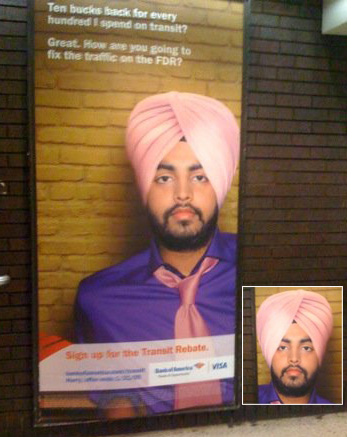 Lookout New Yorkers! There’s a new Sikh in town! Where is he? Who is he? He’s on your subway wall… representing Bank of America, sporting a NICE pagh with the cleanest layers I’ve seen in a long time. It looks like the folks at Kenneth Cole’s might have some competition…
Lookout New Yorkers! There’s a new Sikh in town! Where is he? Who is he? He’s on your subway wall… representing Bank of America, sporting a NICE pagh with the cleanest layers I’ve seen in a long time. It looks like the folks at Kenneth Cole’s might have some competition…
The designers obviously weren’t Sikh because they messed with his pagh and flipped it- maybe to make it look more original. The inset of the picture on the left shows the model with his pagh properly tied – with the larhs (layers) on the right.
Previous discussions of Sikhs in the media, entertainment and modeling:
Today is World AIDS Day. The theme of this year’s World AIDS Day is leadership and efforts are focused on prevention. Indeed, on this 20th anniversary of World AIDS Day, President-elect Obama has stated that his administration will focus on prevention and treatment for at-risk communities in the U.S. and rest of the world. World AIDS Day, is the day when organisations from around the world come together to bring attention to the global AIDS epidemic. In 2007, there were 33 million people living with HIV/AIDS. Women account for 50% of all adults living with HIV worldwide and young people (under 25 years old) account for half of all new HIV infections worldwide.

In line with the theme of leadership which is the message of this year’s anniversary, I came across AIDS Jagoo – an effort by Mira Nair and the Bill and Melinda Gates Foundation – to bring together Indian directors and actors to create four short dramatic films that aim to “dismantle myths and misconceptions of HIV/AIDS.” The four AIDS Jagoo films come from various parts of India – each its own genre and with a different point of view on the HIV/AIDS epidemic.
Migration, directed by Mira Nair, discusses HIV/AIDS from an urban/rural angle. Blood Brothers, directed by Vishal Bhardwaj, follows the journey of a young man from a positive HIV diagnosis to the eye-opening conclusion. Prarambha (The Beginning), directed by Santosh Sivan, deals with society’s prejudices against people with AIDS through the journey of a young boy’s search for his mother. Positive, directed by Farhan Akhtar, shows a family coping with AIDS and reveals the courage they bring to overcome the tragedy. Most of the films have subtitles. Hopefully you’ll be able to watch some or all of these and join the global community in remembering those impacted by HIV/AIDS.
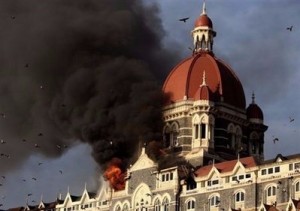 The terrorist attacks in Mumbai — which consisted of blasts in at least seven sites and which apparently targeted Westerners — have, as of this writing, claimed over 110 lives and injured a minimum of 300. Terrorism on this scale has the tendency to engender very common, basic reactions: fear of another attack, concern for those who are at or near the location(s) of the attacks, care for friends or family who may have loved ones affected, disbelief that one set of humans can do this to other humans, and an interest in why the terrorists did what they did. All these elements were present in the wake of 9/11 and the 7/7 bombings, and I believe have been resurrected again with the Mumbai attacks.
The terrorist attacks in Mumbai — which consisted of blasts in at least seven sites and which apparently targeted Westerners — have, as of this writing, claimed over 110 lives and injured a minimum of 300. Terrorism on this scale has the tendency to engender very common, basic reactions: fear of another attack, concern for those who are at or near the location(s) of the attacks, care for friends or family who may have loved ones affected, disbelief that one set of humans can do this to other humans, and an interest in why the terrorists did what they did. All these elements were present in the wake of 9/11 and the 7/7 bombings, and I believe have been resurrected again with the Mumbai attacks.
There is another aspect of a response to mass terrorism that I’d like to discuss in this post: the inclination to unfavorably treat those who share characteristics with or bear resemblance to the terrorists. Following 9/11 and 7/7, Muslims and those perceived to be Muslim were subject to a pervasive and violent backlash. (As we reported earlier this week, Sikhs in America have been profiled in the airport setting.) Accordingly, with news accounts suggesting that the Mumbai terrorists are Muslim, some are worried that Muslims in India may face a wave of public and/or private harassment and discrimination. For example, a colleague who heads a major civil rights organization in America expressed that he was “praying for victims of [the] Mumbai attack[s] and for Muslims in India.”
It should not have to be this way.
A new contest + award is in place for Sikhs. Who will be the Chic Sikh of the Year for 2008?
The sponsor is Sikhchic, the online magazine which promotes Sikhs in the arts (and also invites articles on an array of subjects). The nomination process is completely transparent, which make s it interesting. Anyone can nominate by simply entering a nomination and the reasons for it as a comment. It then gets posted, so you can see all of the nominations here. So far, the illustrious nominees include: Prime Minister Manmohan Singh, the Singh Twins, Fauja Singh, Amandeep Singh Madra, and I.J. Singh.
s it interesting. Anyone can nominate by simply entering a nomination and the reasons for it as a comment. It then gets posted, so you can see all of the nominations here. So far, the illustrious nominees include: Prime Minister Manmohan Singh, the Singh Twins, Fauja Singh, Amandeep Singh Madra, and I.J. Singh.
The award doesn’t have to be awarded to a Sikh. It’s unclear how much of a connection a nominee has to have to the Sikh community- whether they have to commit a Sikh-like deed or act to somehow promote/improve the Sikh community. It also doesn’t have to be to a person- it can be to an institution. There are many organizations that have done some really interesting things in the past few years for the Sikh community, and I’m sure we’ll be seeing some of them nominated.
Awards validate ideals- confirm that they mean something. It ‘s unclear so far what ideals this award will recognize since the parameters for nomination have been left purposefully vague. I guess we’ll know more when an awardee is chosen.
